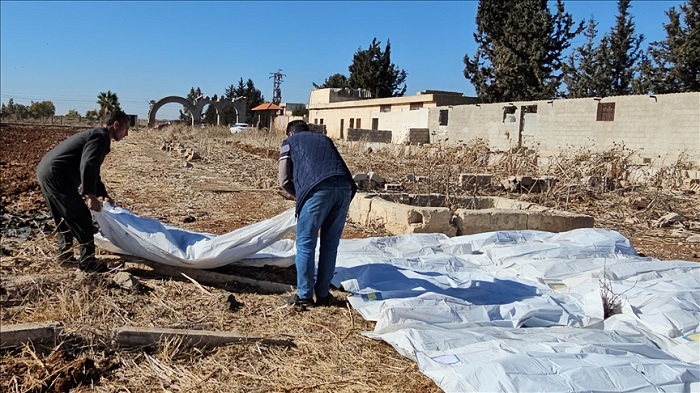-
16:40
-
13:00
-
17:00
-
16:00
-
10:20
-
10:00
-
09:30
-
16:20
-
15:00
Follow us on Facebook
Uncovering Atrocities Mass Grave Near Damascus May Contain 100,000 Victims
A recently uncovered mass grave near Syria’s capital, Damascus, is believed to hold the remains of up to 100,000 victims, shedding light on decades of atrocities under the regime of former President Bashar al-Assad and his predecessors. The discovery, located in al-Qutayfah, 40 kilometers north of Damascus, is among several mass graves identified following the collapse of the Assad family's decades-long rule.
This site, along with 12 others across the country, reveals a grim history of extrajudicial killings, torture, and enforced disappearances. One grave in southern Syria contained 22 bodies, including women and children, showing evidence of torture and execution.
Experts and human rights advocates underscore the significance of these findings. Professor Ugur Umit Ungor, an expert on genocide studies, described the al-Qutayfah grave as emblematic of the regime’s systematic brutality. "The full scale of these atrocities can only be confirmed by accessing the Assad regime’s archives,” he explained. Ungor highlighted the importance of professional handling of the sites to ensure proper identification and justice. A DNA repository, he added, could provide closure to families searching for missing loved ones.
Anonymous sources provided videos and evidence that supported a year-long investigation into the burial sites. Advocacy groups estimate the number of bodies in al-Qutayfah alone could exceed 100,000. The Syrian air force intelligence allegedly managed the transfer of victims—many of whom were killed in detention facilities—to these graves.

International organizations, including Human Rights Watch, have urged Syrian authorities to preserve the evidence for future accountability. Recent visits to areas like Tadamon in southern Damascus revealed additional remains with signs of execution, further emphasizing the need for forensic and legal investigations.
Ahmed al-Sharaa, commander-in-chief of Syria’s interim administration, vowed to hold those responsible for these crimes accountable. He called on international bodies to assist in documenting the regime's atrocities, promising that justice would be served.
The former president, now exiled in Russia, recently dismissed the new leadership as “terrorists” in a statement. Al-Sharaa’s administration, however, insists on ensuring security, protecting minorities, and pursuing a peaceful transition for Syria’s future.
The revelations from mass graves like al-Qutayfah uncover the harrowing legacy of Syria’s dictatorship, providing a foundation for justice and healing in a nation long scarred by repression and violence. As international efforts mobilize to address these crimes, the hope for accountability and reconciliation remains crucial for Syria’s recovery.



